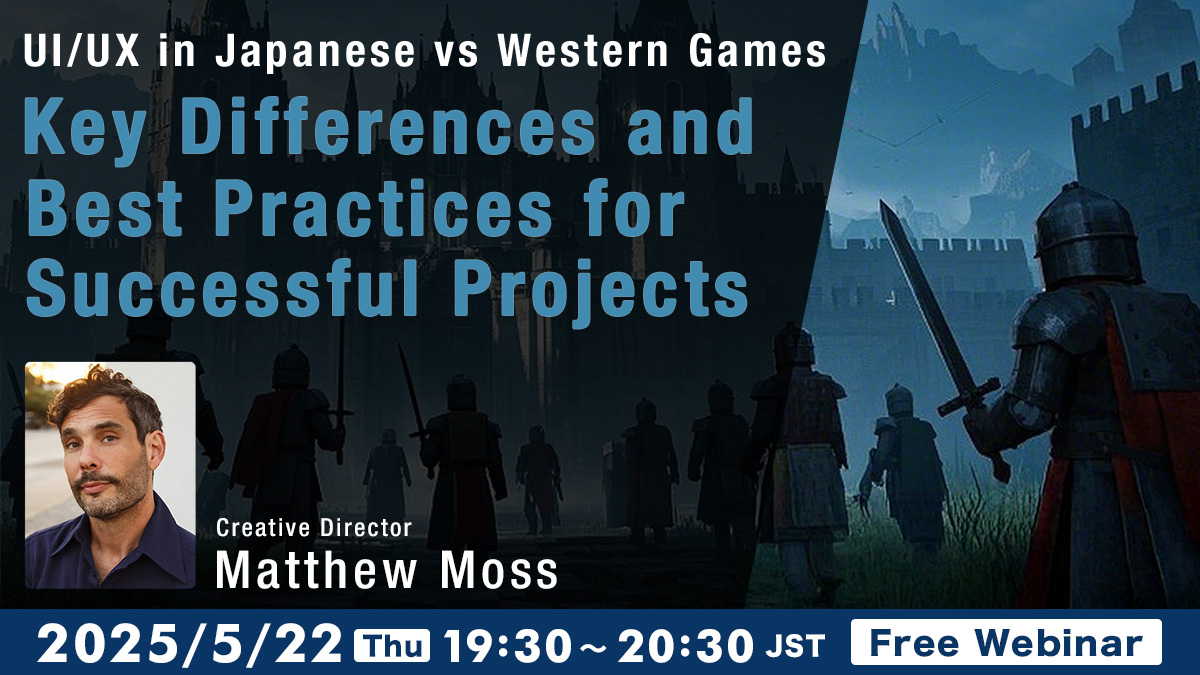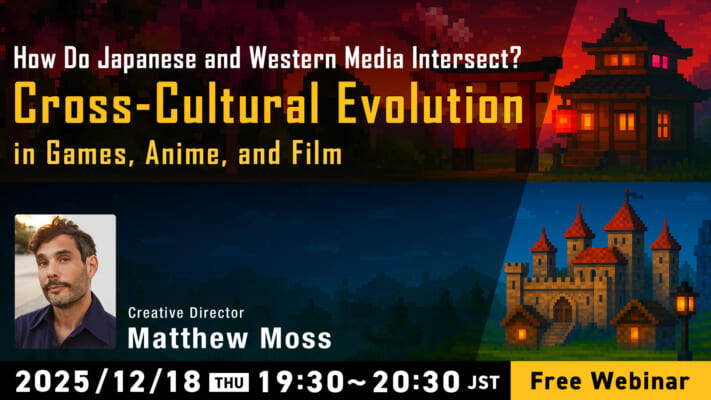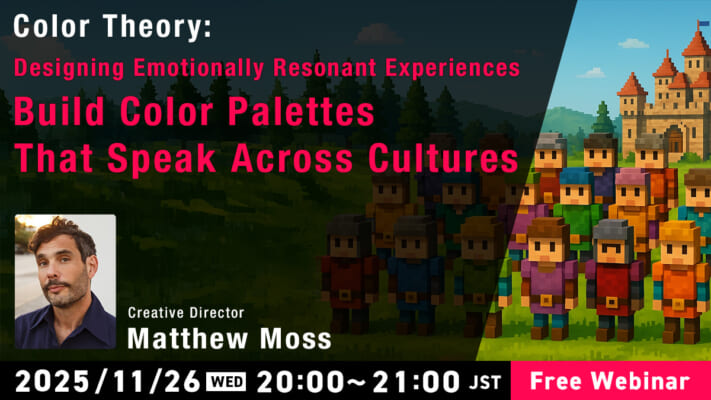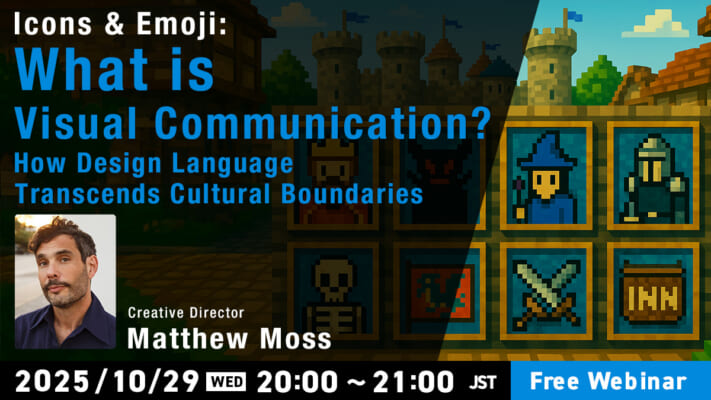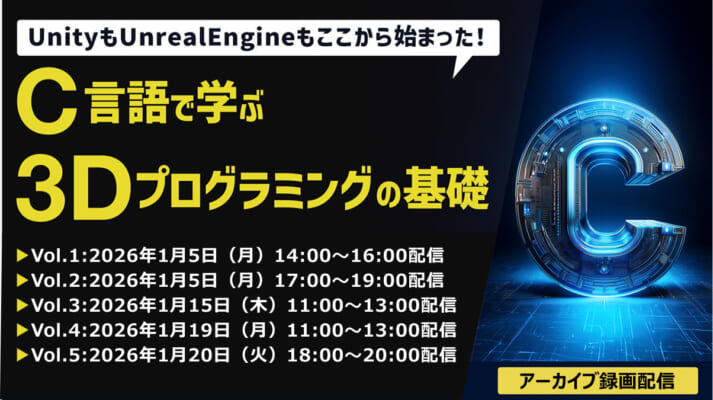On May 22th, (Thursday) Creek and River Co., Ltd, will hold the seminar “UI/UX in Japanese vs. Western Games:Key Differences and Best Practices for Successful Projects ”
※英語でのセミナーとなりますが、同時通訳を通して日本語でお聞きいただくことも可能です(ご自身でオリジナル「英語」または「通訳チャンネル」を選択していただくことができます)。
日本語開催概要ページ>>
We’ll explore the cultural and design philosophies behind UI/UX in Japanese and Western games—
From ornate, menu-heavy interfaces to minimalist, diegetic design. We’ll look at how these styles shape player expectations, and how to adapt UI for global markets without losing artistic identity. Plus, a look at accessibility and localization strategies for truly international design.
■Cultural Foundations of UI/UX:
Compare and contrast:
First compare how Japanese UI design often embraces density and visual flair, while Western UI leans toward minimalism and functionality.
What can be used from these different approaches in regard to a game or project’s focus?
■Menus vs. Diegetic Design:
Explore how:
Japanese games prioritize layered menu systems (Monster Hunter, Persona), versus Western games favoring in-world or HUD-lite approaches (Dead Space, The Last of Us).
When is there a benefit for each of these approaches?When is it better to make the UI “invisible,” and when should it be expressive and prominent?
(meaningfu choices – for follows function or does function follow form)
■Visual Hierarchy & Player Flow:
Examine the difference:
Japanese UI often assumes a learning curve, rewarding players who explore systems over time.
Western games usually guide users more explicitly, prioritizing quick comprehension and onboarding.
Should good UI challenge the player, or make their decisions effortless?
■Adapting Across Regions:
Analyze the needs:
Localizing Japanese UIs for the West often means reducing visual complexity, while Western UIs localized for Japan may feel too sparse.
The key challenge is preserving visual identity while respecting regional usability norms.
How do you adapt a UI for new players without losing the soul of the game’s design? How do you maintain flexibility in the visual framework?
■Accessibility & Inclusivity in Context:
Deepen Understanding:
Western studios are increasingly integrating accessibility into UI from the start, while Japanese studios are evolving more gradually in this area.
Localization also requires deep cultural sensitivity—not just translation, but visual tone and structure.
How do we create “inclusive UI” when designing for a global audience?
■Q&A
登壇者
Matthew Moss氏
Matthew Moss is a seasoned Creative Director with over 18 years of experience in game visual development. He has led teams in both Tokyo and New York, collaborating with renowned companies such as Disney, National Geographic, TV Tokyo, and LEGO. Matthew is deeply passionate about enhancing the visual appeal of games, believing that the key to success lies in harmonizing a project’s core concepts, technology, and mission with its visual development. This approach aims to deliver moments of inspiration, emotion, and imagination to the audience.
Matthew excels in conceptualizing and executing innovative game designs, leveraging cutting-edge technologies and creative strategies to provide exceptional player experiences. He is committed to building strong client relationships and fostering highly collaborative teams, driven by a desire to create games that both inspire and entertain.
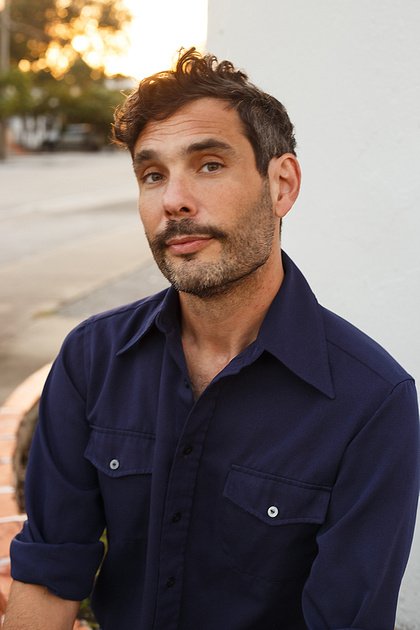
Outline of the event
| Date and time | 2025/5/22(THU) 19:30~20:30(JST) |
|---|---|
| Schedule | 19:30~19:35 Creek and River Co., Ltd Introduction 19:35~20:20 Presentation by Matthew Moss 20:20~20:30 Q&A |
| Place | Zoom |
| Speakers | Matthew Moss |
| Participants | ・Game developer ・Game designer ・Game planner ・Graphic designer ・UX designer ・UI designer ・User / Player researcher ・Programmer / Developer |
| Entry fee | free |
| Capacity | 100 people |
| Organizer | CREEK & RIVER Co., Ltd. |
| Application deadline | 2025/5/22(THU) 20:30(JST) |
応募は締め切りました。




